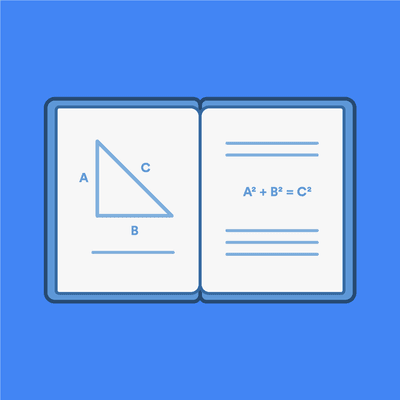Is a textbook a secondary source?

It depends. A textbook can either be a secondary or tertiary source and, in seldom cases, a primary source:
- In most cases, the author of a textbook interprets prescribed theories of a topic, and that would make the textbook a secondary source.
- A textbook can be a tertiary source when it simply indexes information about a particular topic.
- Finally, if you were to research the development of textbooks during a specific time period, then a textbook could be used as a primary source.
➡️ What is a secondary source?
For example, the IB Mathematical Studies textbook is to be used as a secondary source in any research as its authors are not the original authors of the theories, but they use their own words and perspective to describe them.

If this textbook resembled a dictionary, then it would have to be referenced as a tertiary source. To give an idea, if it did not have any textual reference, like an introduction or explanations of mathematical theories, then it would be a tertiary source. Still, it could be referenced as a primary source in a study about textbooks for IB diploma students in the last 10 years.
How to cite a textbook
The citation style used will determine the exact citation format. This is how you would cite a textbook in APA:
Sellgren, A. W. (1999). Macroeconomics. In M. Doepke, A. Lehnert, & A. W. Sellgren (Eds.), Macroeconomics (pp. 33–37). University of Chicago.
Instead of worrying about the correct format of your citation in any given citation style, you can use a reference manager like Paperpile to automatically and correctly generate your citation for you.
Collect your sources and keep them tidily organized in your Paperpile library. Switch between thousands of citation styles and cite your references directly in Google Docs, Microsoft Word, and LaTeX:

Frequently Asked Questions about textbooks as secondary sources
🧪 Is a science textbook a secondary source?
It depends. A science textbook can either be a secondary or tertiary source and, in very few cases, a primary source. In most cases, the author of a textbook interprets prescribed theories of a topic and would, therefore, be a secondary source.
📗 When is a textbook a tertiary source?
A textbook can be a tertiary source when it simply indexes information about a particular topic.
🥇 When is a textbook a primary source?
if you were to research the development of textbooks during a specific time period, then a textbook could be used as a primary source.
🧲 Is a physics textbook a secondary source?
It depends. A physics textbook can either be a secondary or tertiary source and, in very few cases, a primary source. In most cases, the author of a textbook interprets prescribed theories of a topic and would, therefore, be a secondary source.
🤯 Is a psychology textbook a secondary source?
It depends. A psychology textbook can either be a secondary or tertiary source and, in very few cases, a primary source. In most cases, the author of a textbook interprets prescribed theories of a topic and would, therefore, be a secondary source.


